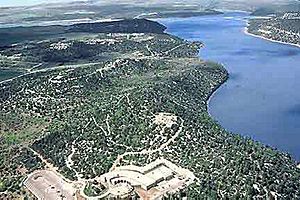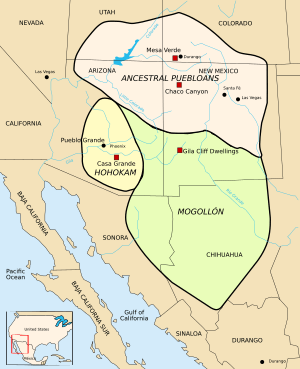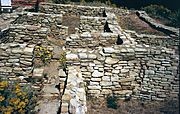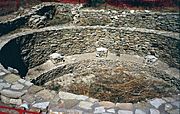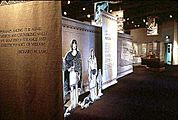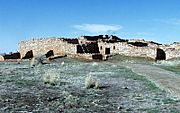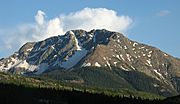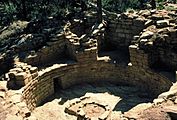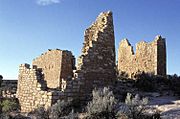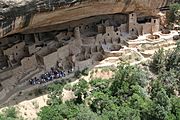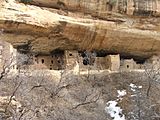Anasazi Heritage Center facts for kids
 |
|
| Established | 1988 |
|---|---|
| Location | 27501 Highway 184 Dolores, Colorado |
| Type | Archaeological museum |
The Canyons of the Ancients Visitor Center and Museum is in Dolores, Colorado. It used to be called the Anasazi Heritage Center. This museum teaches us about ancient Native American cultures. It focuses on the Pueblo people and early hunter-gatherers.
Right at the museum, you can explore two ancient sites. These are the Escalante and Dominguez Pueblos. They were homes to the Ancient Pueblo peoples around the 1100s. The museum shows off many amazing objects. These are some of the 3 million artifacts found in the area. Most of them belonged to the Ancestral Puebloans.
The center also has a public research library. You can find many educational resources here. There is also a museum shop. The picnic area and a special nature trail are easy to access. They are great for everyone, including those using wheelchairs.
Contents
Ancient Pueblo People
The Ancestral Puebloan people lived in settled communities. These communities were called pueblos. They grew their own food, like corn, beans, and squash. They also hunted wild animals and gathered plants.
These ancient people might have lived in the Four Corners area as early as 1500 BC. The Four Corners is where Colorado, Utah, Arizona, and New Mexico meet. A long time ago, 20,000 to 30,000 people lived and farmed in the Montezuma County, Colorado area. Each person needed about one acre of land to grow enough corn.
They also hunted wild game and collected foods like berries and piñon nuts. The area faced dry periods, called droughts. A big drought happened in the late 1200s. Because of this and other reasons, the Pueblo people moved south. By 1300 AD, they had moved to what is now New Mexico and Arizona.
You might hear the term Anasazi used for these ancient people. This word has been used since the 1930s. It comes from the Navajo word for "ancient enemy" or "outsider." Modern Pueblo people do not like this term. They see their ancestors as sacred and celebrate them.
Escalante and Dominguez Pueblos
The Escalante and Dominguez Pueblos are right next to the Visitor Center and Museum. These were homes for the Ancestral Pueblo people at different times. Escalante Pueblo was built around 1120 to 1130 AD. It had groups of stone-walled family rooms. It also had communal rooms, including special underground rooms called kivas.
The way Escalante Pueblo was built is similar to Chaco Canyon in New Mexico. People lived in this pueblo again around 1150 AD and then again around 1200 AD.
Close to Escalante Pueblo is a smaller ancient home. It is called Dominguez Pueblo. This site shows how single families lived outside the main pueblo. Workers found many interesting things here. These included "6,900 turquoise, jet, and shell beads." They also found a shell and turquoise frog pendant. Two beautiful ceramic pots and six bone scrapers were also found. There was even a woven mat and many other items.
These two ancient pueblos are named after two Spanish friars. They were Francisco Atanasio Domínguez and Silvestre Vélez de Escalante. They wrote about these ancient sites in 1776. This was during their famous expedition.
Museum and Visitor Center
The Bureau of Land Management (BLM) takes care of the museum and its buildings. The Heritage Center opened in 1988. It also serves as the main visitor center for the Canyons of the Ancients National Monument.
Related Archaeological Sites
-
Kiva ruins at Canyons of the Ancients
See Also


